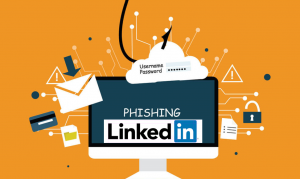Ransomware is a type of malware that encrypts files, data, or machines and threatens to delete or destroy the data unless a ransom is paid. We can also say that ransomware is a combination of phishing and malware. Recent attacks have targeted state and municipal governments, which are easier to infiltrate than companies and are under pressure to pay ransoms in order to restore critical programs and websites used by residents
How does it work?
It is a type of malware that can extort money from its victims by demanding that they provide a certain amount of money to unlock their systems. Two main types of ransomware are screen lockers and encryptors. Screen lockers usually prevent people from accessing their systems and files. Encryptors are those who encrypt the data.
Victims often get a lock screen (common to both ransomware and screen blockers) notifications asking them to pay the ransom. After paying the ransom, the customer gets a decryption key and can try to decrypt the file. Instead of multiple sources’ reports, it’s always proven that paying the ransom is the only way to decrypt your data. Sometimes the victim does not get the key. Some attacks install malware on your computer system even after paying a ransom and exposing your data.
Ransomware is installed and begins encrypting crucial files on the victim’s PC when a person opens a malicious attachment or clicks on a malicious URL. The ransomware displays a message on the victim’s computer after encrypting the data. The message explains what happened and how to compensate the attackers. The ransomware offers that if the victims pay then they receive the instructions to decrypt the data.
Types of Ransomware :
Screen lockers:
Screen locker ransomware is a type of virus that prevents us from logging in or file access while demanding ransom. Since the screen-locking virus does not employ encryption, it is usually easier to remove than encryption-based. You may be able to remove screen locker ransomware by starting your computer or device in safe mode and then running anti-virus software, depending on the type of ransomware.

Encrypted ransomware:
It basically uses asymmetric encryption. This is a type of encryption that encrypts and decrypts a file using a pair of keys. The attacker generates a unique public-private pair of keys for the victim, with the private key used to decrypt data saved on the attacker’s server.
Ways of attacks:
Malspam:
it’s malicious spam that we get through our mails. It is either in the form of Microsoft office attachments or a link. A code runs in the background to attack us with ransomware when we open an attachment. These emails are sent through a botnet i.e., a robot network used by cybercriminals.
Malvertising:
It is an act of virus attack through advertisements. They insert a malicious code in an online advertising network which redirects you when clicked to malicious networks or any other radars which are easier to hack your system. Malvertising frequently uses an infiltrated iframe, or unseen webpage element, to carry out its operations.
Spear phishing:
How to prevent Ransomware:
- Email phishing is the most common way of spreading ransomware. To detect and block malicious emails we can use Secure Email Getaway(SEG) i.e., an email server that protects an organizations or users internal email servers; It monitors the incoming and outgoing emails. It is often used with a targeted attack protection that helps you stay ahead of attacker by detecting and blocking before it reaches our inbox like a truecaller app .
- Protect your web browsing against ransomware by installing Secure Web Getaway(SWG) i.e., a security technology that keeps unprotected internet traffic out of an internal network.
- Back up your files frequently and automatically! That won’t stop a malware attack, but it can make the damage caused by one much less significant.










Hello! I know this is kinda off topic however , I’d figured I’d ask. Would you be interested in exchanging links or maybe guest authoring a blog article or vice-versa? My site goes over a lot of the same topics as yours and I think we could greatly benefit from each other. If you happen to be interested feel free to send me an e-mail. I look forward to hearing from you! Great blog by the way!